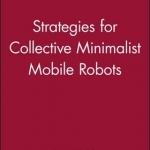Strategies for Collective Minimalist Mobile Robots
BookThis item doesn’t have any media yet
2001 | Computing & IT
An important title in the 'Engineering Research Series', Strategies for Collective Minimalist Mobile Robots presents research on one of the most exciting areas of technology associated with robotics - co-ordinated teams, or groups, of tiny robots. These act colonially and behave as a body, or collect data individually, to feed information to a single data retrieval point, offering a network of information. Intercommunication between many tiny robots allows for problem areas to be detected and concentrated upon, bringing the pack of robots together.
The developments and research reported here show the ways in which engineers are trying to mimic biological systems and behaviour to find solutions to engineering problems. Dr Melhuish's research aims to analyse various naturally occurring collective systems as models for robotic system development. He applied the results of observations of biological system behaviour among social insects, such as ants, to robot activity. Much of Strategies for Collective Minimalist Mobile Robots is concerned with a review of the remarkable achievements of groups of simple insects and the observation that collective achievement can far exceed the sum of individual performances. Although at an early stage of development and management, collective robotic technology has created a high level of interest from those involved in R & D among professional engineers.
COMPLETE CONTENTS:
Introduction
Background, issues, and related work
Minimalist locomotion
Collective minimalist movement
Minimalist regulation of group size
Collective minimalist action on the environment
Collective minimalist clustering
Collective minimalist sorting and segregation
Conclusions and further work.
Related Items:
| Published by | John Wiley and Sons Ltd |
| Edition | Unknown |
| ISBN | 9781860583186 |
| Language | N/A |
Images And Data Courtesy Of: John Wiley and Sons Ltd.
This content (including text, images, videos and other media) is published and used in accordance
with Fair Use.
